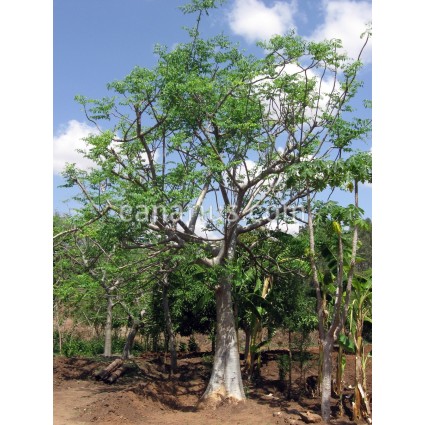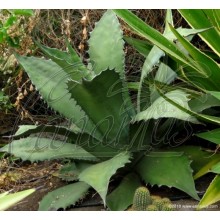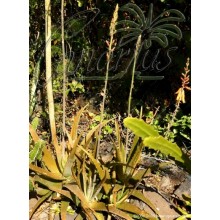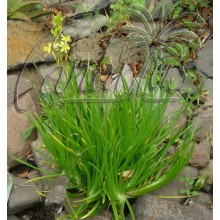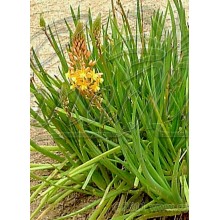Moringa stenopetala
Large shrub or tree with bottle-shaped trunk, becoming gigantic in favourable tropical conditions.
It is regarded as extremely useful, as it bears long twisted seed pods, and edible leaves eaten like cabbage.
It is regarded as extremely useful, as it bears long twisted seed pods, and edible leaves eaten like cabbage.
Nouveau
Large shrub or tree with bottle-shaped trunk, becoming gigantic in favourable tropical conditions.
It is regarded as extremely useful, as it bears long twisted seed pods, and edible leaves eaten like cabbage. For this and more reasons, it is still grown as a crop on the terraces of the Ethiopian Highlands. Similarly to the more widespread Moringa oleifera, this is a multipurpose tree: Give a look on the internet and see how many dishes and uses exist throughout its native range, which is Southern Ethiopia to Northern Kenya.
Norice: Moringa stenopetala is a slow growing tree, unlike Moringa oleifera, a one or two year old seedling can be just 10-20 cm tall. What counts is the size of the base, which grows thick like a carrot. The tree will "jump up" a few years later, and only if put in deeper pots or in the ground.
Picture of the adult tree from Wikimedia Commons: By Trees ForTheFuture - Flickr: Ethiopia - Mature Moringa stenopetala tree - March 2011, CC BY 2.0, https://commons.wikimedia.org/w/index.php?curid=18274550
It is regarded as extremely useful, as it bears long twisted seed pods, and edible leaves eaten like cabbage. For this and more reasons, it is still grown as a crop on the terraces of the Ethiopian Highlands. Similarly to the more widespread Moringa oleifera, this is a multipurpose tree: Give a look on the internet and see how many dishes and uses exist throughout its native range, which is Southern Ethiopia to Northern Kenya.
Norice: Moringa stenopetala is a slow growing tree, unlike Moringa oleifera, a one or two year old seedling can be just 10-20 cm tall. What counts is the size of the base, which grows thick like a carrot. The tree will "jump up" a few years later, and only if put in deeper pots or in the ground.
Picture of the adult tree from Wikimedia Commons: By Trees ForTheFuture - Flickr: Ethiopia - Mature Moringa stenopetala tree - March 2011, CC BY 2.0, https://commons.wikimedia.org/w/index.php?curid=18274550
| Cultivation | Protégée |
| Origine de la plante | Afrique |
| Présentation | Racine nue |
| Taille max. | 300cm et plus |
| Famille botanique | Moringaceae |
| Lumière | Soleil |
| Température minimale hivernale | 0 ºC à 15 ºC |
| Saison de floraison | Mois les plus chauds |
| Type de plante | Ligneuses |
| Soins | Pot |
| Soins | Faible entretien |















